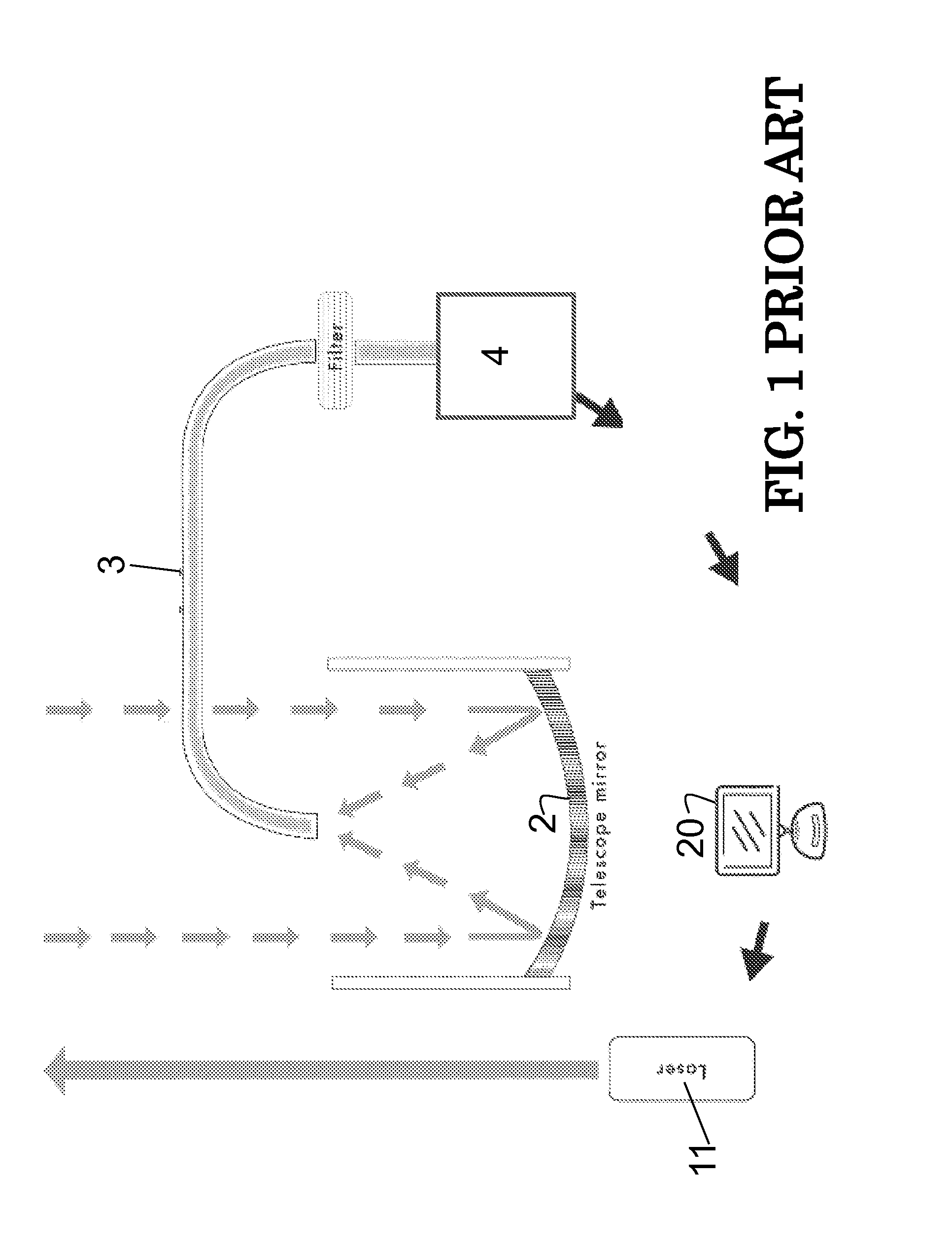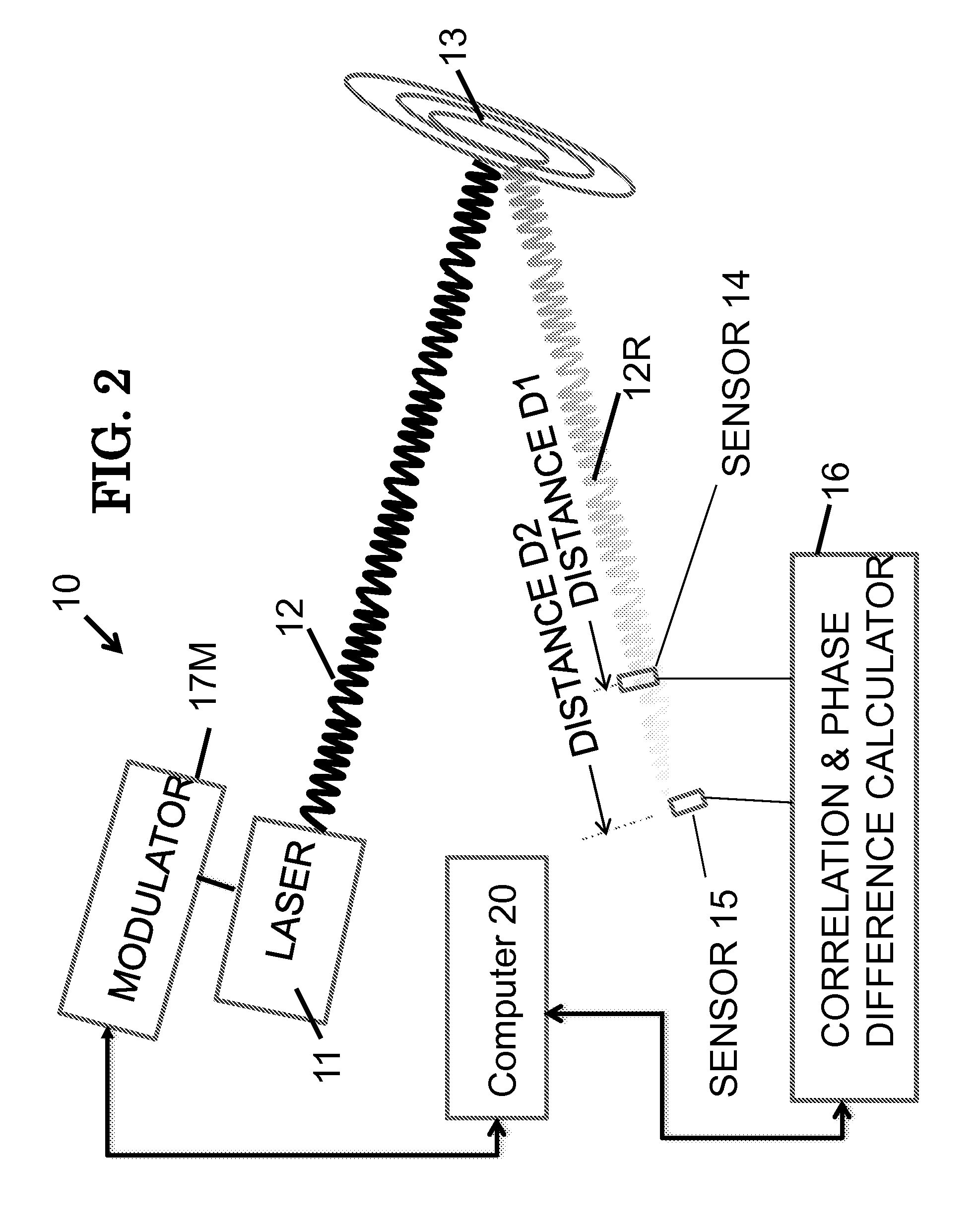Method and system for lidar using quantum properties
a quantum property and quantum property technology, applied in the field of methods and systems for lidar using quantum properties, can solve the problems of obscuring media image resolution, affecting the accuracy of image resolution, and unable to achieve image resolution through obscuring media (e.g., smoke or clouds), etc., to achieve sufficient time resolution and repetition rate, accurate timing, and large ensemble of measurements
- Summary
- Abstract
- Description
- Claims
- Application Information
AI Technical Summary
Benefits of technology
Problems solved by technology
Method used
Image
Examples
Embodiment Construction
[0064]The present invention now will be described more fully hereinafter with reference to the accompanying drawings, in which embodiments of the invention are shown. However, this invention should not be construed as limited to the embodiments set forth herein. Rather, these embodiments are provided so that this disclosure will be thorough and complete, and will fully convey the scope of the invention to those skilled in the art. In the drawings, the dimensions of objects and regions may be exaggerated for clarity. Like numbers refer to like elements throughout. As used herein the term “and / or” includes any and all combinations of one or more of the associated listed items.
[0065]The terminology used herein is for the purpose of describing particular embodiments only and is not intended to limit the full scope of the invention. The terms lidar, Lidar, Ladar and ladar are equivalent for purposes used herein. As used herein, the singular forms “a”, “an” and “the” are intended to inclu...
PUM
 Login to View More
Login to View More Abstract
Description
Claims
Application Information
 Login to View More
Login to View More - R&D
- Intellectual Property
- Life Sciences
- Materials
- Tech Scout
- Unparalleled Data Quality
- Higher Quality Content
- 60% Fewer Hallucinations
Browse by: Latest US Patents, China's latest patents, Technical Efficacy Thesaurus, Application Domain, Technology Topic, Popular Technical Reports.
© 2025 PatSnap. All rights reserved.Legal|Privacy policy|Modern Slavery Act Transparency Statement|Sitemap|About US| Contact US: help@patsnap.com



